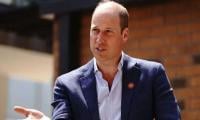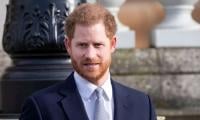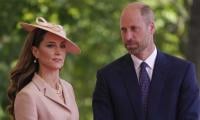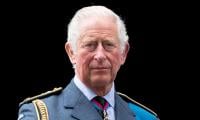Saving local languages
The cabinet division recently issued a letter to other federal departments directing them to use Urdu in their public and official correspondence. The directive also states that the president, prime minister and his cabinet ministers have to make speeches in Urdu when in Pakistan or abroad. The media also reported
By Zubair Torwali
July 28, 2015
The cabinet division recently issued a letter to other federal departments directing them to use Urdu in their public and official correspondence. The directive also states that the president, prime minister and his cabinet ministers have to make speeches in Urdu when in Pakistan or abroad. The media also reported on this move as one that makes Urdu the official language of Pakistan, fulfilling the obligation made by the 1973 constitution wherein it is suggested that English would be replaced with Urdu within fifteen years. On May 14 this year the federal cabinet decided that Urdu would be the official language as per Article 251 of the constitution.
One must feel jubilant at the new initiative by the PML-N government as Urdu has now, to a great extent, become the lingua franca of Pakistani society, despite the fact that it is the first language (mother language) of not more than only seven percent Pakistanis.
Urdu immersion programmes have been in our educational policies since decades. It is used dominantly in our mass media; and the emergence of private television channels during the past decade has popularised Urdu. Besides that, there are a number of books, booklets and pamphlets – mostly on religion and poetry – produced each year in the Urdu language. Given the ‘vibrant’ Urdu TV channels in Pakistan both Urdu and religion have become the most effective means of access to consumers in Pakistan.
This ‘shift to Urdu’ was not a direct outcome of any policy. It was based on commercial and religious pragmatism, as the majority of Pakistanis couldn’t learn English despite it being taught in school from early childhood.
What the federal government decided regarding Urdu is plausible. Yet at the same time the government bias is well evident from its behaviour towards the so-called provincial and ‘minority languages’.
There are believed to be 70 living languages in the country, not including English and Urdu. The numbers of speakers of these language range from 150 (Aer language) to 61 million (Punjabi).
The National Assembly Standing Committee on Law and Justice rejected a bill seeking national status for regional languages in July last year. The bill presented by the ruling party lawmaker, Marvi Memon, got only one vote in favour out of five in the said committee. Another bill demanding a national status for 14 Pakistani languages is still lying somewhere in the drawers of the National Assembly.
Pakistanis are linguistically ‘compound bilinguals’ – referring to speakers who have learnt their native language and then another language later in life. With the ‘another language’ later in life Pakistanis are usually immersed in a second language completely. Eventually they abandon their native language, as it is not taught in schools. This is more common among the elite. The ordinary majority suffers most as it cannot become fully proficient in the native language nor can it learn the second language – whether Urdu or English.
On the educational, social and cultural utility of the ‘local’ and ‘indigenous’ languages the Pakistani state mindset seems ambivalent. This ambivalence about local language education is found among local community members in Pakistan as well which, in its essence, is the impact of the non-acceptance of the linguistic diversity on the part of the state of Pakistan. In Pakistan the parents and communities as well as policy makers are often more confident of the importance of the English, and too a great extent of Urdu as well; and of the culture associated with these languages than they are of the mother tongue and home culture.
Since religion and the Urdu language have played a pivotal role in the political ideology of Pakistan, it becomes almost impossible for other expressions of pluralism or multiculturalism to survive within the typical Pakistani mindset. Apparently the ‘image’ of religion and Urdu is produced and reproduced in order to maintain internal unity.
But contrarily this practice is counterproductive in terms of national cohesion and internal security. On the one end it has directly given rise to an extreme political religiosity whereas on the other it has fostered sense of derivation and marginalisation within the federating units. In Pakistan what the power wielders have been doing on every front, whether against extremism and terrorists or separatism, is largely ideological indoctrination so that the internal conflicts remain concealed or dormant. No permanent solution to these conflicts is sought.
Very often in Pakistan the argument against the inclusion of the mother tongue in education is given on the pretext that this paradigm has no empirical research behind it. They ignore the fact that research confirming the educational and cultural effectiveness of mother tongue-medium instruction certainly exists. These decision-makers are not convinced on any ground other than the pedagogical aspects of mother-tongue instruction. It is not the pedagogical factors of mother tongue education that impede its national level adoption. Political and social aspects come powerfully into play when language-in-education issues come under consideration. The working of a national language policy is significantly influenced by these political attitudes towards using local language and culture for educational purposes and nation-building.
Pakistan is still in search of national cohesion. And for national unity a certain kind of ‘discourse’ is needed. In Pakistan this discourse changes its shapes with the passage of time – but never the essence. It exclusively revolves around religion and the existence of an essential enemy.
An elite that has successfully abandoned its language and culture wields power in Pakistan. Since this power is naturally not static and changes its centres hence ruptures can be seen in the national fabric in the shape of separatism or extremism. In our context the elite never allow this power to slip away from them; so they try to replace ethnic conflicts with religious ones because they think religion is more centripetal than the others.
In order to build a nation the state must accommodate all languages, cultures, religions and sects – irrespective of their size and numbers.
Along with making Urdu the ‘official language’ the government needs to give a national status to the regional and ‘minority languages’; and enact measures for promoting and safeguarding these languages by including them in education and in media.
The writer heads IBT, an independent organisation dealing with education and
development in Swat. Email: ztorwali@gmail.com
One must feel jubilant at the new initiative by the PML-N government as Urdu has now, to a great extent, become the lingua franca of Pakistani society, despite the fact that it is the first language (mother language) of not more than only seven percent Pakistanis.
Urdu immersion programmes have been in our educational policies since decades. It is used dominantly in our mass media; and the emergence of private television channels during the past decade has popularised Urdu. Besides that, there are a number of books, booklets and pamphlets – mostly on religion and poetry – produced each year in the Urdu language. Given the ‘vibrant’ Urdu TV channels in Pakistan both Urdu and religion have become the most effective means of access to consumers in Pakistan.
This ‘shift to Urdu’ was not a direct outcome of any policy. It was based on commercial and religious pragmatism, as the majority of Pakistanis couldn’t learn English despite it being taught in school from early childhood.
What the federal government decided regarding Urdu is plausible. Yet at the same time the government bias is well evident from its behaviour towards the so-called provincial and ‘minority languages’.
There are believed to be 70 living languages in the country, not including English and Urdu. The numbers of speakers of these language range from 150 (Aer language) to 61 million (Punjabi).
The National Assembly Standing Committee on Law and Justice rejected a bill seeking national status for regional languages in July last year. The bill presented by the ruling party lawmaker, Marvi Memon, got only one vote in favour out of five in the said committee. Another bill demanding a national status for 14 Pakistani languages is still lying somewhere in the drawers of the National Assembly.
Pakistanis are linguistically ‘compound bilinguals’ – referring to speakers who have learnt their native language and then another language later in life. With the ‘another language’ later in life Pakistanis are usually immersed in a second language completely. Eventually they abandon their native language, as it is not taught in schools. This is more common among the elite. The ordinary majority suffers most as it cannot become fully proficient in the native language nor can it learn the second language – whether Urdu or English.
On the educational, social and cultural utility of the ‘local’ and ‘indigenous’ languages the Pakistani state mindset seems ambivalent. This ambivalence about local language education is found among local community members in Pakistan as well which, in its essence, is the impact of the non-acceptance of the linguistic diversity on the part of the state of Pakistan. In Pakistan the parents and communities as well as policy makers are often more confident of the importance of the English, and too a great extent of Urdu as well; and of the culture associated with these languages than they are of the mother tongue and home culture.
Since religion and the Urdu language have played a pivotal role in the political ideology of Pakistan, it becomes almost impossible for other expressions of pluralism or multiculturalism to survive within the typical Pakistani mindset. Apparently the ‘image’ of religion and Urdu is produced and reproduced in order to maintain internal unity.
But contrarily this practice is counterproductive in terms of national cohesion and internal security. On the one end it has directly given rise to an extreme political religiosity whereas on the other it has fostered sense of derivation and marginalisation within the federating units. In Pakistan what the power wielders have been doing on every front, whether against extremism and terrorists or separatism, is largely ideological indoctrination so that the internal conflicts remain concealed or dormant. No permanent solution to these conflicts is sought.
Very often in Pakistan the argument against the inclusion of the mother tongue in education is given on the pretext that this paradigm has no empirical research behind it. They ignore the fact that research confirming the educational and cultural effectiveness of mother tongue-medium instruction certainly exists. These decision-makers are not convinced on any ground other than the pedagogical aspects of mother-tongue instruction. It is not the pedagogical factors of mother tongue education that impede its national level adoption. Political and social aspects come powerfully into play when language-in-education issues come under consideration. The working of a national language policy is significantly influenced by these political attitudes towards using local language and culture for educational purposes and nation-building.
Pakistan is still in search of national cohesion. And for national unity a certain kind of ‘discourse’ is needed. In Pakistan this discourse changes its shapes with the passage of time – but never the essence. It exclusively revolves around religion and the existence of an essential enemy.
An elite that has successfully abandoned its language and culture wields power in Pakistan. Since this power is naturally not static and changes its centres hence ruptures can be seen in the national fabric in the shape of separatism or extremism. In our context the elite never allow this power to slip away from them; so they try to replace ethnic conflicts with religious ones because they think religion is more centripetal than the others.
In order to build a nation the state must accommodate all languages, cultures, religions and sects – irrespective of their size and numbers.
Along with making Urdu the ‘official language’ the government needs to give a national status to the regional and ‘minority languages’; and enact measures for promoting and safeguarding these languages by including them in education and in media.
The writer heads IBT, an independent organisation dealing with education and
development in Swat. Email: ztorwali@gmail.com
-
 Louis Tomlinson Knew Harry Styles Was Destined To 'take Over'
Louis Tomlinson Knew Harry Styles Was Destined To 'take Over' -
 Prince William Brings In Top Crisis Strategist As Royal Challenges Loom: Source
Prince William Brings In Top Crisis Strategist As Royal Challenges Loom: Source -
 Ben Affleck Jokes Tax Shock After Good Will Hunting Payday
Ben Affleck Jokes Tax Shock After Good Will Hunting Payday -
 Matt Damon Gets Candid About Standing By Ben Affleck During Tough Times
Matt Damon Gets Candid About Standing By Ben Affleck During Tough Times -
 Bebe Rexha Jokes About Asking Taylor Swift To Manage Her Career Amid Label Exit
Bebe Rexha Jokes About Asking Taylor Swift To Manage Her Career Amid Label Exit -
 How Prince Harry’s Security Fight Could Change His Royal Future? Source
How Prince Harry’s Security Fight Could Change His Royal Future? Source -
 Matthew McConaughey Finds It Difficult To Sit Through His Own Movies
Matthew McConaughey Finds It Difficult To Sit Through His Own Movies -
 Mark Ruffalo Makes Strong Political Comments At 2026 Golden Globes
Mark Ruffalo Makes Strong Political Comments At 2026 Golden Globes -
 Leonardo DiCaprio's Girlfriend Flaunts Stylish Dress After Golden Globes Age Joke
Leonardo DiCaprio's Girlfriend Flaunts Stylish Dress After Golden Globes Age Joke -
 Harry Styles Launches Secret Site, Fuels Comeback Speculation
Harry Styles Launches Secret Site, Fuels Comeback Speculation -
 Kate Middleton's New Approach Expected To Draw Criticism From Meghan's Camp
Kate Middleton's New Approach Expected To Draw Criticism From Meghan's Camp -
 Jennifer Lawrence Admits Feeling Nervous Over Taking New Step
Jennifer Lawrence Admits Feeling Nervous Over Taking New Step -
 Lee Cronin’s ‘The Mummy’ Drops Its Chilling First Trailer
Lee Cronin’s ‘The Mummy’ Drops Its Chilling First Trailer -
 Louis Tomlinson Reveals What Former 1D Members' Dynamic Is After Liam Payne's Death
Louis Tomlinson Reveals What Former 1D Members' Dynamic Is After Liam Payne's Death -
 Jacob Elordi, Ana De Armas Get Cozy During 2026 Golden Globes
Jacob Elordi, Ana De Armas Get Cozy During 2026 Golden Globes -
 Meghan Markle Turns Juvenile And Plans Half Bit Ruse: ‘She’s Trying To Get On Her Radar’
Meghan Markle Turns Juvenile And Plans Half Bit Ruse: ‘She’s Trying To Get On Her Radar’



